Fat Transfer in Abu Dhabi
Search and Compare the Best Clinics and Doctors at the Lowest Prices for Fat Transfer in Abu Dhabi
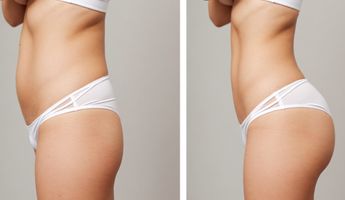
Find the best clinics for Fat Transfer in Abu Dhabi
With Medijump you can browse 2 facilities offering Fat Transfer procedures in Abu Dhabi. The cheapest price available is $1,909 in Dubai
Fat Transfer in United Arab Emirates
Price: $ 1,909
Fat Transfer in Dubai
Price: $ 1,909
Fat Transfer in Abu Dhabi
Price: $ 3,585
Thailand offers the best prices Worldwide
Price: $ 167
From 136 verified reviews
Junaid Tehseen, 22 September 2020
Visited recently but I must say I experienced a true 5 star experience which I have never expected in a Hospital ,, I needed an assistant, Mr Shady Soleiman one of the manager in hospital met me assisted me with every thing and made my life so easy in a very difficult situation Thank you and every one
From 37 verified reviews
Mcjaydele Mclaine, 18 September 2020
I had a very positive experience with all of the Nurses and staff at Ahalia Hospital-Mussafah. I highly recommend Dr. Saumya my gynecologists she is very professional and amazing!
- Home
- United Arab Emirates
- Abu Dhabi
Compare Before & After Photos of _procedure_photos.phpFat Transfer
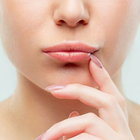
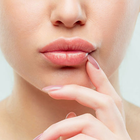
Front view
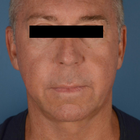
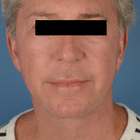
Front view
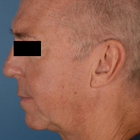
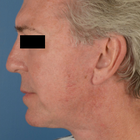
Full-side view
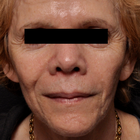
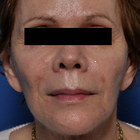
Front view
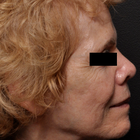
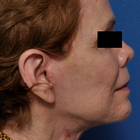
Full-side view
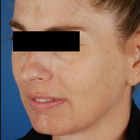

Half-side view
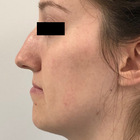
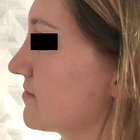
Full-side view
WHY US?
At Medijump, we're making medical easy. You can search, compare, discuss, and book your medical all in one place. We open the door to the best medical providers worldwide, saving you time and energy along the way, and it's all for FREE, no hidden fees, and no price markups guaranteed. So what are you waiting for?

Free

Best Price

Widest Selection

Risk-Free
What you need to know about Fat Transfer in Abu Dhabi
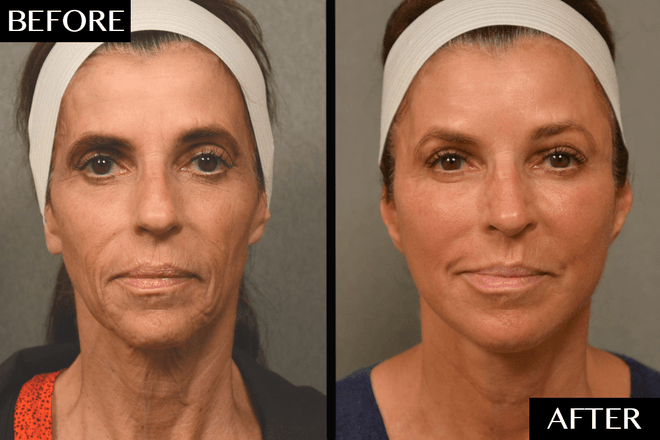
Also known as Fat Harvesting, Fat Grafting, Fat Injections, Lipofilling, Fat Transfer is a cosmetic surgery involving the movement of fat from one part of the body to another. During this procedure, your own fat will be used to fill in irregularities and grooves, primarily in the face, around the temples, eyes, chin, and lips. It can also be used to enhance the appearance of the breast, feet, hips, buttocks, and hands. The procedure is now a well-established technique that was perfected in the early nineties.
Some of the most common aesthetic indications for undergoing fat transfer / lipofilling include sunken cheeks, the disappearance of fat from the cheekbones, deep grooves running from the nose to the corners of the mouth, and in some instances of lines between the lower eyelids and the cheek. It is also one of the most common methods used for lip enhancement. In addition, lipofilling can be used to smooth out all types of irregularities such as those resulting from poorly performed liposuction or injuries.
The necessary fat is obtained by a limited liposculpture through one or several 3 to 5 mm incisions. It is normally taken from the abdomen or inner thigh. The aspirated fat is processed by centrifuging, filtering or rinsing. Pure liquid fatty tissue ready for injection is the result. The fat is then injected where needed. The fat is evenly distributed into the area by injecting minute amounts in the tissues so that the injected fat is well surrounded by healthy tissue. This ensures that the transplanted fat remains in contact with the surrounding tissues that must supply it with oxygen and nutrients.
What is the cost of Fat Transfer in Abu Dhabi?
Being aware of the costs linked to the Fat Transfer pricing in Abu Dhabi is vital for efficient budgeting and organizing. Pricing can differ greatly conditional to numerous things, such as the intricacies of the operation, the quantity of fat transferred, the surgeon's skill level, and the clinic's place. Conducting meticulous research and obtaining diverse quotations from multiple providers before settling is advisable.
Bear in mind, the Fat Transfer is generally deemed a vanity procedure, thus, it is not typically insured by health insurance providers. Exceptions may exist if the operation holds a medical necessity, like reconstruction operations post-mastectomy or injury. It's always advantageous to liaise with your insurance provider to grasp the specific details of your coverage and to ascertain the possible out-of-pocket expenses you could face.
What does a Fat Transfer Procedure Involve?
Consisting of two completely different procedures, extraction of fat called liposuction and transfer of fat through injections. Both the donor and recipient sites are sedated by giving local anesthesia. After this, fat is harvested through injections from the sites where adipocytes are tightly packed, such as the buttocks or abdomen. However, the fat present in lateral sides of the thighs and lower abdomen is also good fat as it contains a larger concentration of adipose-derived stem cells. These stem cells promote angiogenesis and adipogenesis at the recipient site - multiple injections are used to do this.
The material extracted is centrifuged, sedimented and filtered for excessive liquid and pure fat cells are injected just below the skin. This is the most difficult step of fat transfer to inject fat evenly in different layers of recipient tissue. Cannulas and syringes of different sizes are used to do this. In the case of breast augmentation, multiple fat injections are applied to the breasts. It is ensured that these fat cells are injected near a blood vessel so the cells don't die due to a lack of nutrition. Proper nutrition is needed for the cells to survive and grow.
What are the types of Fat Transfer?
Facial fat transfer: If you have facial creases, such as laugh lines, smile lines, and crow’s-feet, fat can be removed from your abdomen, thighs, or other areas and be injected into your face. Acne scars and sunken areas of the face, lips, and cheeks can also be filled in. Your plastic surgeon can even use grafted fat to minimize lines between your nose and mouth, correct skin depressions or indentations and minimize forehead wrinkles. (Facelift, Lip Augmentation)
Breast augmentation: Fat transfer breast augmentation essentially uses liposuction to take fat from other parts of your body and inject it into your breasts. This is a breast augmentation option for women who are looking for a relatively small increase in breast size and would prefer natural results.
Breast implants plus fat grafting: If your breast shape needs optimizing during a breast implant procedure, fat grafting can be useful. If you have residual breast irregularities after undergoing breast augmentation with implants, the irregularities can be filled in with fat to produce a smooth contour and an optimal shape.
Breast reconstruction with fat grafting: If you have breast defects following lumpectomy for breast cancer, fat grafting is an effective method for filling in these defects. Fat grafting is also an option for total breast reconstruction following mastectomy; however, to achieve sufficient breast volume, this is usually a multistage process that requires at least two to four sequential fat grafting procedures.
Buttock augmentation with fat grafting: Many people who desire a fuller, more rounded buttock will opt for a “Brazilian butt lift” which uses fat transfer to provide a more curvaceous buttock without the use of an implant. Liposuction is commonly used to both sculpt the surrounding area and collect the autologous fat to be injected.
Hand rejuvenation with fat grafting: Fat grafting into your hands is effective for adding volume, “plumping up” wrinkled areas, covering underlying vessels and tendons and improving the quality of your skin over time.
How Long Should I Stay in Abu Dhabi for a Fat Transfer Procedure?
As an outpatient procedure, just a couple of hours are needed depending upon the amount of fat that is to be removed and transferred. You can leave the hospital on the same day or sometimes an overnight stay is advised, and in some cases, more than one session is needed. You should stay in Abu Dhabi for at least 10-14 days after being discharged for regular check-ups. During this period, your health and results of the procedure are monitored by your surgeon.
The precise duration of your visit will primarily hinge on your personal situation, including the scope of your surgery, your total health condition, and your body's healing capability. It is always wise to engage in open dialogue with your surgeon about the anticipated period of your stay.
What's the Recovery Time for Fat Transfer Procedures in Abu Dhabi?
The recovery period is different for different areas of your body. After a buttock augmentation, you have to sleep on your stomach or keep standing for at least 4 weeks. Because sitting can dissipate the fat. The shape of the augmented area might appear irregular initially, it will get a proper contour after some time. There will be moderate swelling and bruising at both the donor and the recipient sites for 2 weeks. Your face might appear fat and plump after fat grafting but it will settle down before long. You might suffer from moderate pain for a few days. Pain killers are given to deal with this. Almost 6 months are required for the results to fully show.
What sort of Aftercare is Required for Fat Transfer Procedures in Abu Dhabi?
Things to consider:
- Regular checkups after being discharged.
- Take your medicines regularly, as and when prescribed by the doctor. Avoid self-medication.
- Follow a healthy diet plan for a better recovery.
- Ensure the presence of a friend or family member with you in the early few days to help you with house chores.
- Avoid excessive movement during the early few weeks and do not sit on your butts in case of butt fat transfer because it can dissipate the fat rendering it ineffective.
- Look for the signs of blood clot formation, excessive bruising, etc. Visit your doctor immediately if you find any abnormal thing.
What's the Success Rate of Fat Transfer Procedures in Abu Dhabi?
When exploring any health-related process, the success ratio becomes a key element to consider. The efficiency of the Fat Transfer in Abu Dhabi hinges upon various aspects such as proficiency and expertise of the surgeon, the health condition of the individual, and compliance to the guidelines of care after the operation. Fat transfer has been gaining fame due to its dual advantage of eliminating unnecessary fat from the body and accentuating preferred areas.
The outcomes of Fat Transfer show promising persistency. Many people have enjoyed pleasing results that lasted for a long span of time. Fat transfer for breast augmentation has increased by 76% in 2016 while for butt augmentation, a 26% increase has been witnessed. This approach also enjoys a commendable success ratio when it comes to patient satisfaction, with some researches revealing satisfaction percentages reaching up to 85%. It's however crucial to hold realistic anticipations, since factors like age, weight changes, and general health can sway the results. Regular consultations with your health provider are crucial for monitoring improvements and promptly dealing with any arising issues.
Are there Alternatives to Fat Transfer Procedures in Abu Dhabi?
Fat grafting is an expensive technique as it consists of 2 different procedures. Following are some alternatives to it:
- Dermal fillers: these are given through injections to make your skin look plump. Sunken cheeks can be effectively corrected through this technique.
- Breast implants: for small breasts, implants are an alternative to fat grafting. A silicone implant is inserted into your breasts to increase their size.
- Breast reconstruction: cancer patients, who went through mastectomy can get their bust back by reconstructive surgery.
- Tummy tuck: This procedure tightens your abdominal muscles giving them a tighter and flattened appearance.
- Liposuction: excessive fat is removed from different parts of your body through liposuction. Your tummy looks flatter and you look smarter after this procedure.
- Cheek augmentation: in this technique, silicone implants are inserted into your cheeks to make them look bigger and plump.
All of the techniques mentioned above involve only one procedure.
What Should You Expect Before and After the Procedure
Understanding the process before and after undergoing the Fat Transfer is crucial to easing worries and ensuring a successful outcome. Before the process, your doctor will provide in-depth guidance on the requisite preparations. This might involve abstaining from certain drugs or supplements that may increase bleeding, and possibly, fasting if general anesthesia is planned. Thorough medical check-up and health evaluation will be performed to lower any prospective risks. In particular instances, your doctor may advocate lifestyle alterations such as quitting smoking because it can hinder the recovery process.
Following the Fat Transfer, patients might have minor swelling and bruising, but these usually recede in a few weeks. Aches and discomfort can be effectively controlled with prescribed medicine. Though recovery time varies among individuals, most return to work and resume everyday activities within one to two weeks. Your doctor will provide detailed instructions for a post-procedure care routine, possibly involving wearing pressure garments and regular review meetings to track healing and progress.
What are Potential Risks of Fat Transfer?
Possible complications can include:
- Blood clot formation, infections, and ulmonary embolism leading to the failure of fat grafting
- Absorption of the transferred fat by the body leading to asymmetry or irregularities in the treated area
- The formation of oil cysts or calcification which can interfere with radiological imaging
Whilst the information presented here has been accurately sourced and verified by a medical professional for its accuracy, it is still advised to consult with your doctor before pursuing a medical treatment at one of the listed medical providers
No Time?
Tell us what you're looking for and we'll reachout to the top clinics all at once
Enquire Now

Popular Procedures in Abu Dhabi
Prices Start From $26

Prices Start From $113

Prices Start From $208

Prices Start From $275

Prices Start From $758

Prices Start From $5

Recommended Medical Centers in Abu Dhabi for Fat Transfer

- Interpreter services
- Translation service
- Religious facilities
- Medical records transfer
- Medical travel insurance
- Health insurance coordination
- TV in the room
- Safe in the room
- Phone in the room
- Private rooms for patients available

- Interpreter services
- Translation service
- Religious facilities
- Medical records transfer
- Medical travel insurance
- Health insurance coordination
- TV in the room
- Safe in the room
- Phone in the room
- Private rooms for patients available

- Interpreter services
- Translation service
- Religious facilities
- Medical records transfer
- Medical travel insurance
- Health insurance coordination
- TV in the room
- Safe in the room
- Phone in the room
- Private rooms for patients available

- Interpreter services
- Translation service
- Religious facilities
- Medical records transfer
- Medical travel insurance
- Health insurance coordination
- TV in the room
- Safe in the room
- Phone in the room
- Private rooms for patients available

- Interpreter services
- Translation service
- Religious facilities
- Medical records transfer
- Medical travel insurance
- Health insurance coordination
- TV in the room
- Safe in the room
- Phone in the room
- Private rooms for patients available

- Interpreter services
- Translation service
- Religious facilities
- Medical records transfer
- Medical travel insurance
- Health insurance coordination
- TV in the room
- Safe in the room
- Phone in the room
- Private rooms for patients available
Fat Transfer in and around Abu Dhabi
About Abu Dhabi
Abu Dhabi is the capital city of the United Arab Emirates and the richest city in the country due to its oil fields. Abu Dhabi is an advanced but conservative cosmopolitan city. In 2018, the city was ranked as the safest city in the world with the lowest crime index of more than 300 cities.
Culture, adventures, shopping malls, to coastal beauty; Abu Dhabi has a lot to offer that will leave anyone in awe. The city is filled with opulent architecture, making the skyline of Abu Dhabi a captivating view.
Abu Dhabi is now developing to be the region’s leading medical tourism destination. The government is working continuously to establish a world-class healthcare system. The city targets patients from other Gulf Cooperation Council (GCC) Countries, Russia, China, and other parts of the world. Attracting top-quality doctors and a range of specialist services, Abu Dhabi focuses its procedures on cardiology, oncology, and executive screenings. A total of 16 public and private hospitals in Abu Dhabi offer a wide range of medical treatment with quality care. Cleveland Clinic Abu Dhabi, Ahalia Hospital Musafahl, and Burjeel Hospital are among the highest-regarded medical facilities in the city. The city attracts many medical tourists for the following reasons.
- Medical facilities with the highest standards and international accreditations.
- Treatment using cutting-edge technology.
- Medical interpreters who speak a range of languages.
- The best hospitality, at the hospital, and throughout the city.
Popular Areas in Abu Dhabi
With a beautiful mixture of ultramodern architecture and Islamic traditions, Abu Dhabi is packed with amazing attractions and exhilarating adventure.
- Sheikh Zayed Grand Mosque is the United Arab Emirates’ largest place of worship that attracts millions of tourists each year. The mosque is an architectural wonder, mesmerizing even to the little details. Tourists can choose to get a free one-hour guided tour to get the best insight into the religion and culture that surrounds the mosque.
- Louvre Abu Dhabi is an art and civilization museum that has been open since 2017. The museum is showcasing artworks from around the world. Apart from the artwork, the architecture of the museum is also breathtaking with a web-patterned dome that allows sunshine to filter through.
- Al-Ain Oasis is a UNESCO World Heritage Site. The oasis has only been open to the public recently. It is full of palms and mango trees. Al-Ain Oasis is home to a 3000-year-old falaj irrigation system, the oasis provides an insight into the history of Abu Dhabi inhabitants.
- Ferrari World is the perfect place for tourists who want to celebrate all things, Ferrari. People come to this indoor theme park to experience Formula Rossa, the world’s fastest roller coaster.
- Abu Dhabi Corniche is a beautiful clean beach with great views of turquoise waters and Abu Dhabi skyline that will not disappoint. Tourists can enjoy a day under the sun lounging on the beach, walk along Corniche Road, or admire the sunset.
Weather and Climate in Abu Dhabi
Abu Dhabi has a subtropical climate. The city enjoys sunny skies and hot temperatures throughout the year. Summer starts from May to September and the average temperature ranges between 38–42°C. During the hottest days, the temperature can get as high as 48°C. Winter starts from December to February, the average temperature is around 13-29°C. Rain mainly falls in winter.
The best time to visit Abu Dhabi is from November to April when the temperature is cooler and more pleasant.
Despite the heat in the summer, it is advised to always wear modest clothing as the locals do not welcome revealing or tight clothing. Lightweight and comfortable clothing are suitable most of the year.
Getting Around in Abu Dhabi
Abu Dhabi International Airport serves more than 30 airlines that connect the city to more than 60 countries in the world. Etihad Airways dominates the airport terminal spaces. Abu Dhabi International Airport mainly serves major airlines, although budget airlines such as Airblue Limited and IndiGo also operate flights.
Tourists can choose the airport taxis, buses, or hire a car to get to their destinations from the airport. Airport taxis cost around 75AED to 85AED for a trip to the city center. If you want to take the airport bus, purchase a Hafilat card from the vending machine at the airport terminal bus stop.
There are many ways to get around Abu Dhabi. Taxis are relatively cheap and metered; tourists can flag down the taxis or order through a call center. Abu Dhabi also has a city bus that operates on 14 routes between 6.00 am to 11.00 pm, most fares are 2AED. Hiring a car can be a good way of getting to many destinations as it offers more flexibility. If you’re in Corniche or Yas Island, hiring a bike is the best choice to explore these Islands.
The ever-changing street names and numbering system can be confusing, so it is advisable to describe the landmark you are looking for.
Tourist Visas in Abu Dhabi
Citizens of 60 countries can get a free entry visa (30 or 90 days depending on the country) upon arrival. Gulf Cooperation Council (GCC) citizens do not require a visa to enter Abu Dhabi. Citizens of other countries need to apply for a visa before entering Abu Dhabi through the nearest UAE embassy.
Tourists flying with Etihad Airways to Abu Dhabi International Airport can request a visa arrangement. All visitors are required to hold a passport valid for at least 6 months.
Additional Information
- Local Currency: The local currency is the United Arab Emirates dirham or Emirati Dirham (AED). 1 USD gets you around 3.7 AED. The notes are written in Arabic letters.
- Money & Payments: ATMs and currency exchanges are available across the city. Hotels, restaurants, and shops accept credit cards, debit cards, and cash. Tipping is common, but not expected. Tipping a hotel and restaurant staff is at your discretion. Many high-end restaurants may add a service charge of around 10% and a tourism levy of around 6%.
- Local Language: Arabic is the official language, but English is widely spoken especially in the city center. Road and shop signs are written in Arabic and English.
- Local Culture and Religion: The culture in Abu Dhabi is deeply rooted in Arabia’s Islamic Tradition. Islam is the official religion but people can freely practice their religion as long as they don’t interfere with Islam.
- Public Holidays: Ramadhan is hugely celebrated with the biggest festivals and the city is beautifully decorated. It is important to remember that during Ramadan, drinking, eating, and smoking at fasting hours (daylight) is illegal. Nightclubs are closed for the whole month. Other public holidays are the Islamic New Year, the Prophet’s Birthday, the King’s Coronation Day, Diwali, and Chinese New Year.
Popular Searches
- Plastic Surgery in Thailand
- Dental Implants in Thailand
- Hair Transplant in Thailand
- Breast Augmentation Thailand
- Gastric Sleeve in Thailand
- Gender Reassignment Surgery in Thailand
- Laser Hair Removal in Bangkok
- Botox in Bangkok
- Dermatology in Bangkok
- Breast Augmentation in Bangkok
- Coolsculpting in Bangkok
- Veneers in Turkey
- Hair Transplant in Turkey
- Rhinoplasty in Turkey
- Stem Cell Therapy in Mexico
- Rhinoplasty in Mexico
- Liposuction in Mexico
- Coolsculpting in Tijuana
- Rhinoplasty in Korea
- Scar Removal in Korea
- Gastric Sleeve in Turkey
- Bone Marrow Transplant in India
- Invisalign in Malaysia
- Plastic Surgery in the Dominican Republic
- Tummy Tuck in the Dominican Republic
- Plastic and Cosmetic Surgery in Poland
- Rhinoplasty in Poland
- Hair Implant in Poland
- Dental Implants in Poland
- IVF in Turkey

